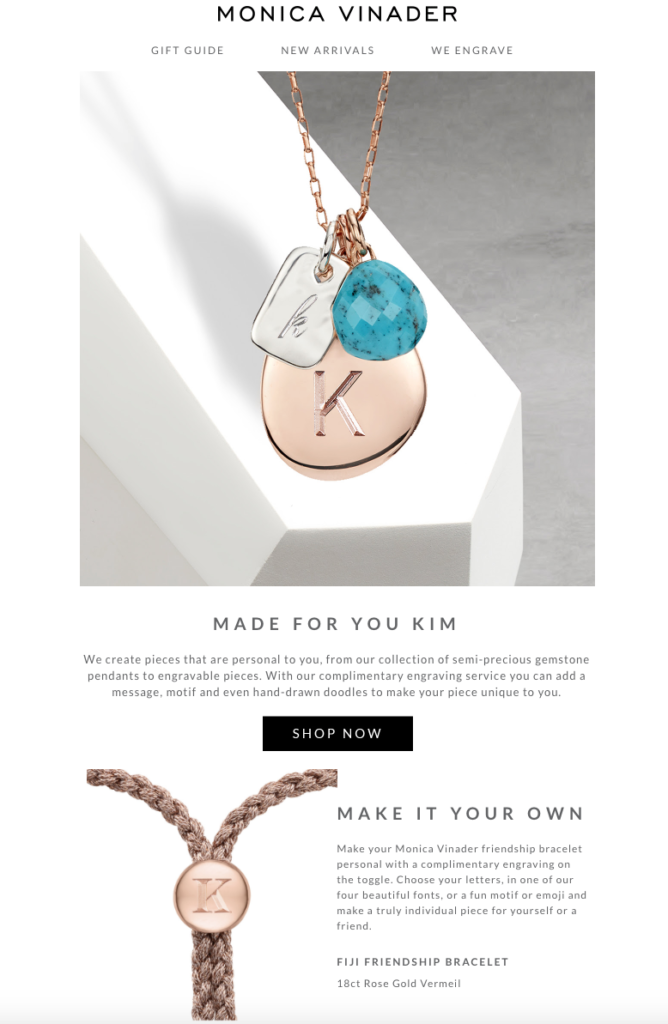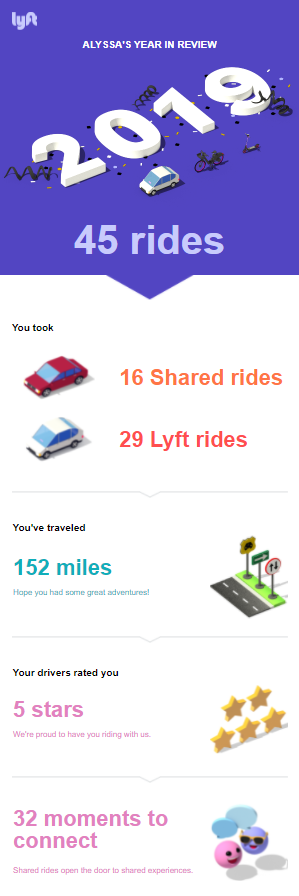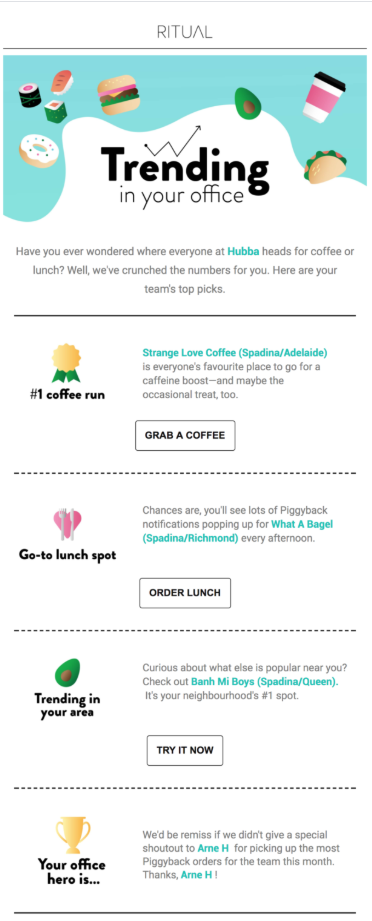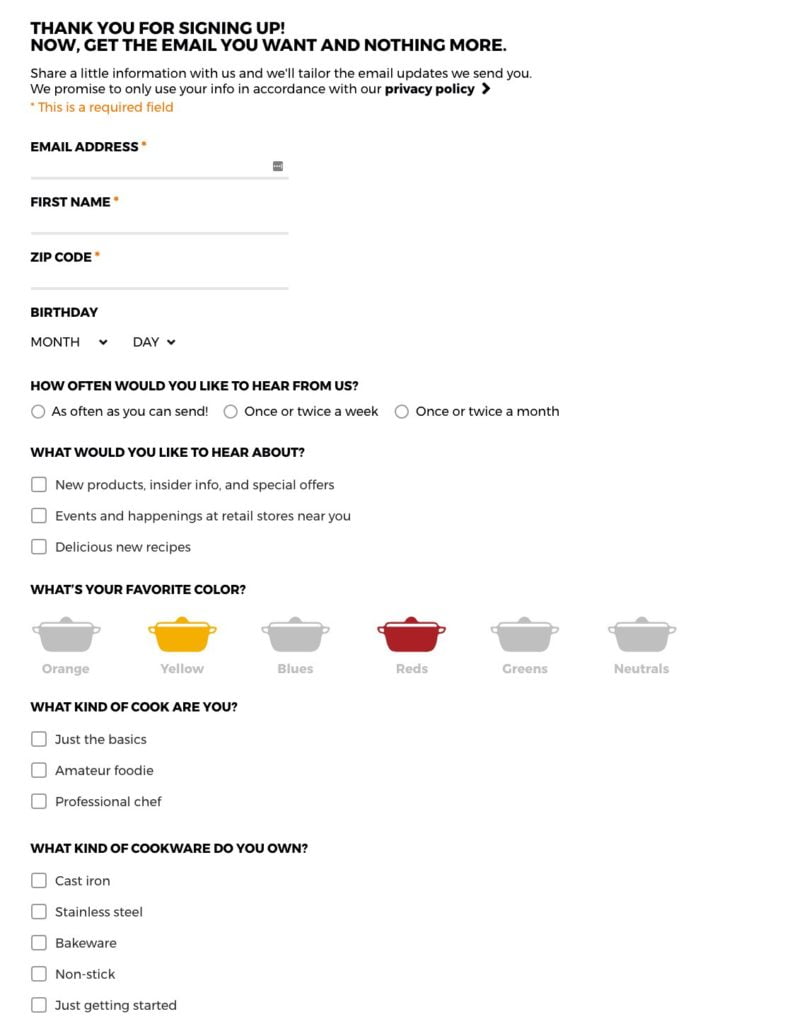Engagement plays a crucial role when it comes to improving your email ROI. But with global email volumes at an all-time high, it’s never been more difficult to pique subscribers’ interest.
So, how can marketers set their campaigns apart from the competition? The answer is personalization.
Higher email volumes have resulted in higher standards from subscribers. Cookie-cutter campaigns won’t cut it anymore—today’s consumers expect personalized, relevant messaging that’s worthy of their time and attention.
But what exactly does personalization entail? Why is it important? And how can you use it to enhance your email campaigns, increase engagement, and drive revenue?
Let’s dive in.
What is personalization?
Personalization (in the context of email marketing) involves using subscriber data to create targeted, relevant email content. This could be anything from their first name or the last purchase they made to their favorite color or where they live.
Personalization can vary in sophistication. On a basic level, it includes tactics like using a subscriber’s first name in the subject line. But more advanced tactics include altering the content of an email based on a subscriber’s age, location, marital status, or other data you’ve gathered about them.
Why is personalization important?
Subscribers are hungry for experiences tailored to their interests and needs. In a recent study, 73 percent of consumers said they would rather do business with brands that use personal information to increase the relevancy of their experiences—and a staggering 86 percent said personalization influences their purchasing decisions.
Personalized emails significantly boost consumer retention rates, conversions, positive engagement, and ROI. Programs that fail to implement nuanced personalization techniques run the risk of missing out on valuable engagement, building personal relationships with their audience, and driving revenue.
How can I use personalization to increase engagement and drive revenue?
Nearly 40 percent of marketers say email personalization is their biggest challenge. If this sounds like you, here are some tips to help you get started:
1. Incorporate zero-party data
Zero-party data is information a customer shares voluntarily with a brand, such as their name, age, location, and personal interests. This data helps senders deliver highly personalized brand experiences to subscribers.
What’s great about zero-party data is it’s free, accurate, and compliant with evolving privacy laws and regulations. Plus, since marketers aren’t taking this data without permission, it helps them build trust with subscribers—a key step towards increasing customer loyalty and engagement.
But before you can start using zero-party data to personalize subject lines, body copy, and even determine email frequency, you must first ask subscribers to provide it.
One of the best ways to do this is via a preference center. Preference centers allow subscribers to tell you about themselves and make choices about the emails they’ll receive.
La Creuset’s preference center, for example, asks subscribers for information that’s truly relevant to their email program. Not only can subscribers provide basic information like their name, birthday, and location, but they’re prompted to communicate their favorite color, preferred email frequency, and level of cooking expertise. This information gives La Creuset everything they need to create highly personalized email content that subscribers find valuable.
2. Segment your email list
Segmentation is the process of dividing your list of subscribers into specific groups using a set of defined attributes, like account activity or purchase history. The goal of segmentation is to better target your subscribers with relevant content.
Segmentation is tied to major lifts in subscriber engagement. In fact, segmented marketing campaigns generate 14.64 percent more opens and almost 60 percent more clicks than non-segmented campaigns. In addition to higher engagement rates, brands using segmentation strategies can achieve revenue increases of up to 760 percent!
Netflix does a great job using account activity to personalize email campaigns. They often leverage behavior patterns (e.g., viewing history) to deliver individualized recommendations. For example, in this email, Netflix recommends shows and movies specifically for fans of “Stranger Things” to watch next.

3. Use dynamic content
Dynamic content allows senders to personalize blocks of content within the email to better resonate with individual subscribers. Even basic information like someone’s first name can be leveraged to present tailormade product recommendations.
This email from Monica Vinader uses the subscriber’s name in the body of the email and creatively leverages dynamic images to personalize products with the subscriber’s initial, proving we don’t need to know everything about our subscribers to deliver cleverly personalized content.

4. Leverage automation
Automation is an easy way to create lasting connections with subscribers and offer services or products that are relevant and timely.
Triggered campaigns like abandoned cart or birthday messages help build customer loyalty and improve ROI. (Activity and lifecycle-based triggers produce at least 21 percent of total email marketing revenue!)
Glam Glow uses automation to send highly personalized cart abandonment emails. Subscribers are reminded of a product they showed significant interest in, and—through the use of dynamic images and social media integration—they can see that specific product being worn by real consumers.

Automation can also be used to let customers know when they’ve reached certain milestones. These emails help brands reiterate the value a consumer found in their service or product.
Lyft relies heavily on personalization in their year-in-review emails to emphasize the special relationship between brand and consumer. The review includes an individual’s star rating, areas visited, and the total number of times they used their service.

5. Be location-specific
Effective personalization means sending customers the information they want, when they want it.
Sending campaigns outside of a subscriber’s time zone might mean they miss out on special deals or promotions, creating a poor subscriber experience. Plus, deploying emails at a time when your audience isn’t likely to be active or online means your messages end up further down in the inbox, which may result in lower subscriber engagement.
In addition to correctly timed deployments, location personalization allows brands to integrate local holidays, celebrations, cultural norms, and activities into their promotions and campaigns. Ritual uses location data to highlight local restaurants near a subscriber’s office, and even shows where coworkers dine to create a familiar, hometown experience.

Conclusion
No matter the brand, email personalization can be greatly beneficial for both senders and subscribers. Taking advantage of these tips is a great way to start increasing engagement, building strong customer relationships, and improving your email ROI.
Now that you’ve become familiar with email personalization, discover how to attract high-quality subscribers to your email program by checking out our eBook, 30+ Quick Tips to Grow Your Email List.
